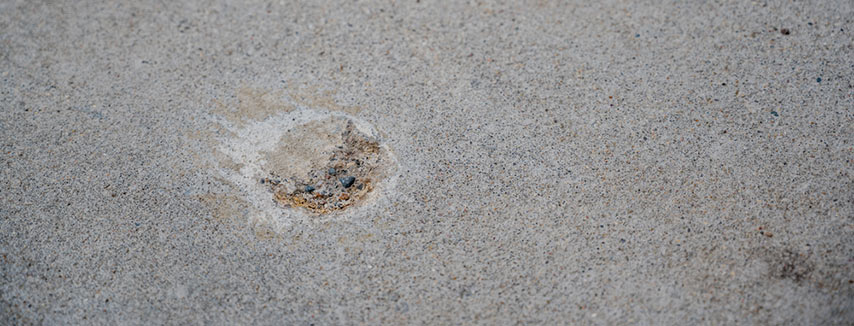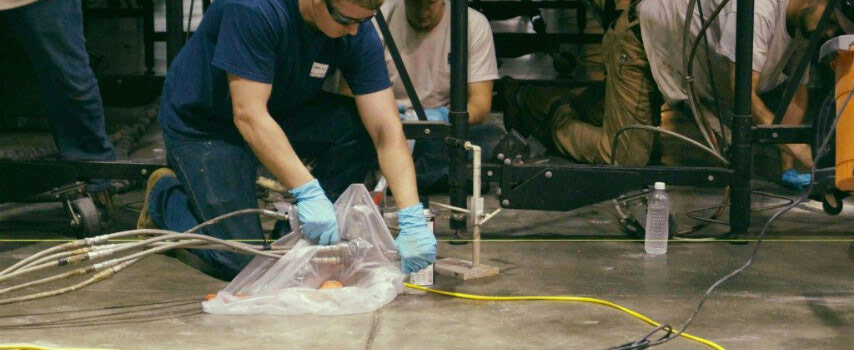A major problem building foundations face is the development of voids beneath their foundation slabs. This undesirable occurrence can cause widespread damage to your building’s structure if left unchecked.
Foundation jacking presents an effective solution to this dilemma, and in this article, we will consider two major ways this can be achieved.
Purpose of Mudjacking and Foam Jacking
Voids forming beneath a foundation’s slab will disrupt its continuity resulting in an uneven surface with fissures, splits, and depressed sections in the concrete. Mud jacking and foam jacking techniques allow homeowners to fill unwanted voids beneath their homes while lifting and leveling out their floors.
Mudjacking vs. Polyurethane Foam Jacking
When lifting concrete slab foundations, homeowners typically have to decide between the more traditional mud jacking technique and newer polyurethane foam void filling. Each of these methods has its merits and drawbacks which we will discuss shortly.
What Is Mudjacking
Mudjacking, just as its name implies, involves using a mud-like mixture of dirt, cement, and water to fill defects beneath concrete slabs. The high water content (slurry) mixture is pumped through 2-inch to 5-inch holes drilled in the foundation into the defects to fill them up.
This process is closely monitored by professional mudjacking crews to ensure thorough and even filling. Once done properly, any depressions or buckling in the foundation should be smoothed out, leaving a level floor.
Does Mudjacking Concrete Work?
If properly done, mudjacking will effectively correct foundational defects. This time-tested technique can achieve satisfactory foundation lift, however, there are potential drawbacks to opting for this method.
Pros and Cons of Mudjacking
Before deciding on mudjacking, homeowners must weigh the pros of the technique against its cons.
Pros of Mudjacking
- Mudjacking is a less costly concrete lifting method compared to the polyurethane alternative. For homeowners on a limited budget for repairs, mudjacking may be the best choice.
- This is a time-tested and trusted method of achieving foundation lift with which most repair crews are familiar.
- Primary repair material is a semi-natural mud slurry which doesn’t negatively impact the environment.
Cons of Mudjacking
- Mudjacking slurry has an inconsistent particle size which is often too coarse to evenly fill out void pockets.
- The slurry is made up of a wet mixture and shrinks when it cures. This can make it difficult to do precise lifting.
- Cure time is multiple days depending the amount of slurry used. Driveways, sidewalks, and patios may be off-limits during the cure time.
- Anecdotally, the results of mudjacking slurry don’t last as long as polyurethane foam and will require replacement more often.
- Larger drill holes are required to deliver mudjacking slurry resulting in hard to conceal patches post-procedure.
- Mudjacking material is very heavy and adding extra weight to a weak subsoil may not be best.
What Is Foam Jacking
Foam jacking using polyurethane foam is a newer, more innovative approach to correcting void defects beneath building foundations. The foam jacking procedure uses a structural-grade, fast-curing polymer which should only be handled by qualified technicians to achieve the best slab lift results.
Once the defective portions of soil beneath a concrete slab are identified, small holes are drilled into the void cavities and an expanding polymer mix is introduced to eliminate these undesirable spaces. In addition to filling void defects, polyurethane foam will compress loose soil, improving its resistance to erosive forces.
Pros and Cons of Foam Jacking
The advantages and disadvantages of using a polyurethane foam injection for foundation lifting are outlined below.
Pros
- Polyurethane foam is a long-lasting lift material.
- The material used for foam jacking is lightweight and will not compress underlying soil and worsen already existing cavities.
- Polyurethane blends easily with soil creating a stable mix with greater strength than a mudjacking mix.
- Smaller injection holes are required to deliver polyurethane foam into a cavity below a foundation resulting in hassle-free life after foundation repair.
- Polyurethane cures very quickly.
- Polyurethane is environmentally-inert.
Cons
- Not good to use on concrete areas less than 4ft wide or long.
- Polyurethane injection can be more expensive because the material is specially engineered.
Mudjacking vs. Foam Cost
Although opting for a mudjacking operation is the cheaper short term alternative, homeowners might end up spending more over time as it may be the less permanent solution. Polyurethane foam jacking will cost more upfront, but the effects will last much longer without the need for frequent refills/retouches.
Despite the longevity of this solution, URETEK Gulf Coast offers a foundation repair warranty to put your mind at ease.
A URETEK customer said the following after receiving our foam foundation repair in Houston.
“We are greatly pleased with the fine workmanship and final product that we have received. The raising of the slab for our detached garage and also a section of the entry walk was completed most professionally. The pleasantness of your crew and the exemplary behavior of your staff was noted and appreciated. It is our feeling that the URETEK slab-lifting system used is a much superior product when compared to standard mud-jacking and compares most favorably in price.” ~ Fred & Betty Moruzzi
URETEK Gulf Coast Offers Comprehensive Foundation Repair Solutions in Houston
At URETEK, we provide the highest quality foundation repair and maintenance services. Our patented, fast-curing polyurethane foam is specifically designed to achieve the satisfactory, long-lasting foundation lift your structure needs.
Contact us online today to get an estimate on your upcoming residential or commercial foundation repair project.


